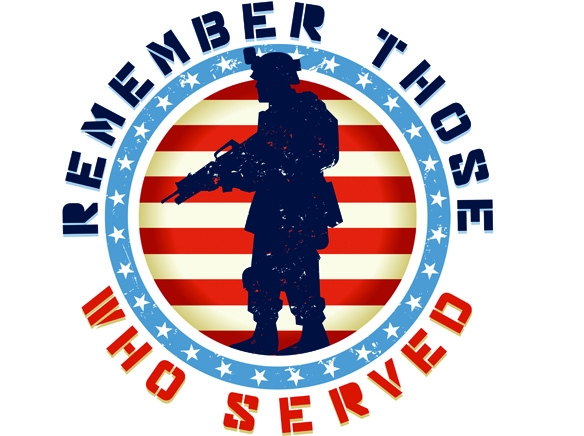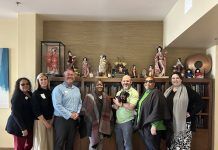On January 23, the San Diego United Veterans Council (UVC) held its first general session of 2016 at the Veterans Museum and Memorial Center in Balboa Park. According to its website, “The United Veterans Council of San Diego County, ‘Voice of Our Veterans’, is an alliance of Veterans and over 200 organizations that are either Congressionally Chartered Veterans Service Organizations or providers of services and support to Veterans.
On January 23, the San Diego United Veterans Council (UVC) held its first general session of 2016 at the Veterans Museum and Memorial Center in Balboa Park. According to its website, “The United Veterans Council of San Diego County, ‘Voice of Our Veterans’, is an alliance of Veterans and over 200 organizations that are either Congressionally Chartered Veterans Service Organizations or providers of services and support to Veterans. The UVC is a forum for sharing information and raising ideas that can lead to the betterment of the Veteran community, and is a unified Veterans’ Voice of Advocacy on legislation, policies, and practices affecting San Diego County Veterans and their families. UVC is open and inclusive, and its Members and Member Organizations enjoy the opportunity to share the works and rewards of the UVC, without obligation to accept any formal responsibility or allegiance.”
Continuing, the UVC states its mission is to “improve conditions for veterans and families,” listing as its key strategies:
Communicate veterans information and requirements and requests
Pronounce veterans issues regionally, in California, and nationally
Link with prominent civic entities to support veterans’ agenda
Lead action to effect change in support of veterans and their families
Of the roughly 60-to-70 people attending the session, it was striking that the vast majority were older, probably eligible for Social Security. There were a few younger individuals, like Joshua Oh (a consultant with the Veterans Economic Communities Initiative) and Mark Zambon (a Fellow in the House of Representatives Wounded Warrior Program who works in the office of Congresswoman Davis). But it could not be said that members of the younger generation of veterans were present in any number.
The self-introductions by all in attendance revealed many organizations were represented, like American Coalition of Veterans, Courage to Call, California Military Officer Association, Military Officers Association of America, US Army Special Forces Association, chapters of the Veterans of Foreign Wars, and others, as well as individual veterans or spouses of veterans, including covering World War II, Korean War, and Vietnam.
During announcements upcoming, the 50th Anniversary of the Vietnam War Commemoration on March 29 at the Scottish Rite Center was noted. Following these announcements were two key speakers: Mr. Patrick Prieb, Director of the San Diego Veterans Administration (VA) Regional Center and Ms. Cynthia Abair, Acting Director of VA San Diego Healthcare.
Mr. Prieb began by providing an update on the matter of contaminated water at Marine Corps Base Camp Lejeune, North Carolina, explaining that more health ailments have been added to the approved list of those eligible for VA care. Prieb also provided numbers about the average days to process claims, stating the average is now 87 days, down 180 days since March 2013. He continued to explain they average 70 community events per month, at which veterans can file their claims, averaging 426 hours of outreach per month. Describing Secretary McDonald’s goal that no more than 10 percent of claims be older than 125 days, Prieb reported the nationwide average is 22 percent, with San Diego standing at 17 percent.
He continued by saying he is “trying to streamline” what he referred to as a “frustrating process” for appeals. “What complicates the process is that people wait to file claims,” he observed, sometimes for years. Ideally, according to Prieb, our service members should file their claim while in the process of being discharged. He recommend veterans obtain the assistance of a national service organization to represent them during the filing and any appeal process, mentioning the Disabled Veterans of America as one such organization. Mr. Prieb graciously fielded a variety of questions and comments from the audience. After Mr. Prieb came Ms. Cynthia Abair.
Ms. Abair offered macro numbers, reporting that during Fiscal Year 15 including homeless and justice system, there were 171,791 encounters with 22,715 veterans and 51,738 encounters (an encounter = one visit) with 6,872 veterans categorized under Operation Iraqi Freedom/Operation Enduring Freedom. More generally on the issue of mental health, Abair reported that in Fiscal Year 15, 4,014 individuals were referred to the community for care, with an additional 2,626 who were authorized for community referral choosing to stay with the VA health care system.
She then presented numbers on veteran suicides in this region, citing that 40 occurred Fiscal Year 14 and 49 in Fiscal Year 15. According to Abair, all veterans are now being screened for suicide risk during initial enrollment and are referred to mental health if required. Continuing, she told the session that there are three suicide prevention coordinators following about 180 high-risk individuals at any given time, including coordinating with the national suicide prevention call line. Speaking about an upcoming San Diego Union Tribune article on the topic; Abair said that of the 29 veteran suicides reviewed for the piece, only seven had been San Diego VA patients.
Having the Director of the Regional VA Center and Acting Director of VA San Diego Healthcare attend and present to the UVC monthly general sessions makes this forum a valuable one for individual veterans of all eras to attend, as does networking with the various organizations represented at the session.













